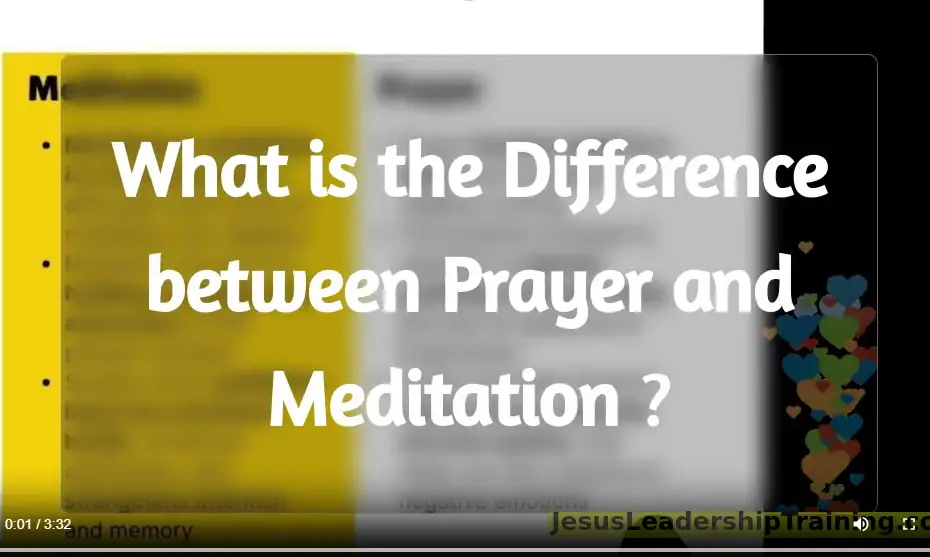Prayer and meditation, while often used interchangeably in general conversation, have distinct meanings and practices within Christian tradition. They serve different purposes in a believer’s spiritual life, offering unique pathways to connect with God, understand His will, and align oneself with His purposes.
Table of Contents
Prayer
Prayer is essentially communication with God. It involves both speaking to God and listening for His voice, allowing for a two-way relationship between the believer and the Divine. Prayer can take various forms, including adoration, confession, thanksgiving, and supplication (ACTS model). It’s a time when one can bring their requests, praises, thanks, and confessions directly to God, seeking His guidance, mercy, and grace. The Bible contains numerous encouragements and commandments to pray. For instance, 1 Thessalonians 5:16-18 encourages believers to “Rejoice always, pray without ceasing, give thanks in all circumstances; for this is the will of God in Christ Jesus for you.” This underscores the importance of continual communication with God, emphasizing prayer as an integral part of Christian life.
Meditation
Meditation, in the Christian context, is the thoughtful reflection on God’s Word, His character, and His works. It involves engaging the mind and heart with Scripture or spiritual truths, pondering them deeply to allow for a transformation of the inner being by the Holy Spirit. Unlike some Eastern practices that aim to empty the mind, Christian meditation seeks to fill the mind with God’s truth. Psalm 1:1-2 offers insight into the practice of meditation: “Blessed is the one…whose delight is in the law of the Lord, and who meditates on his law day and night.” This highlights the process of continually engaging with and reflecting on God’s Word as a source of spiritual nourishment and growth.
Relevant Examples
- Prayer: Nehemiah’s instant prayer in Nehemiah 2:4 before answering King Artaxerxes showcases prayer as a spontaneous conversation with God.
- Meditation: The reflection of Mary, the mother of Jesus, on the events surrounding Jesus’ birth in Luke 2:19 serves as an example of meditation, where she pondered these things in her heart.
Three Main Takeaways
- Purposeful Communication vs. Reflective Contemplation: Prayer focuses on direct communication with God, involving requests, praise, and confession, whereas meditation is a contemplative practice that involves deep thinking and reflection on God’s Word and character.
- Active vs. Receptive Posture: In prayer, believers actively engage with God, speaking and listening. Meditation requires a more receptive posture, absorbing and reflecting on Scripture or spiritual truths.
- Immediate Dialogue vs. Prolonged Reflection: Prayer often seeks immediate dialogue with God regarding current concerns or expressions of faith, while meditation involves a prolonged, thoughtful engagement with spiritual truths for deeper understanding and transformation.
Understanding these distinctions can enrich one’s spiritual life, providing balanced pathways for growing closer to God through both heartfelt communication and thoughtful reflection.



